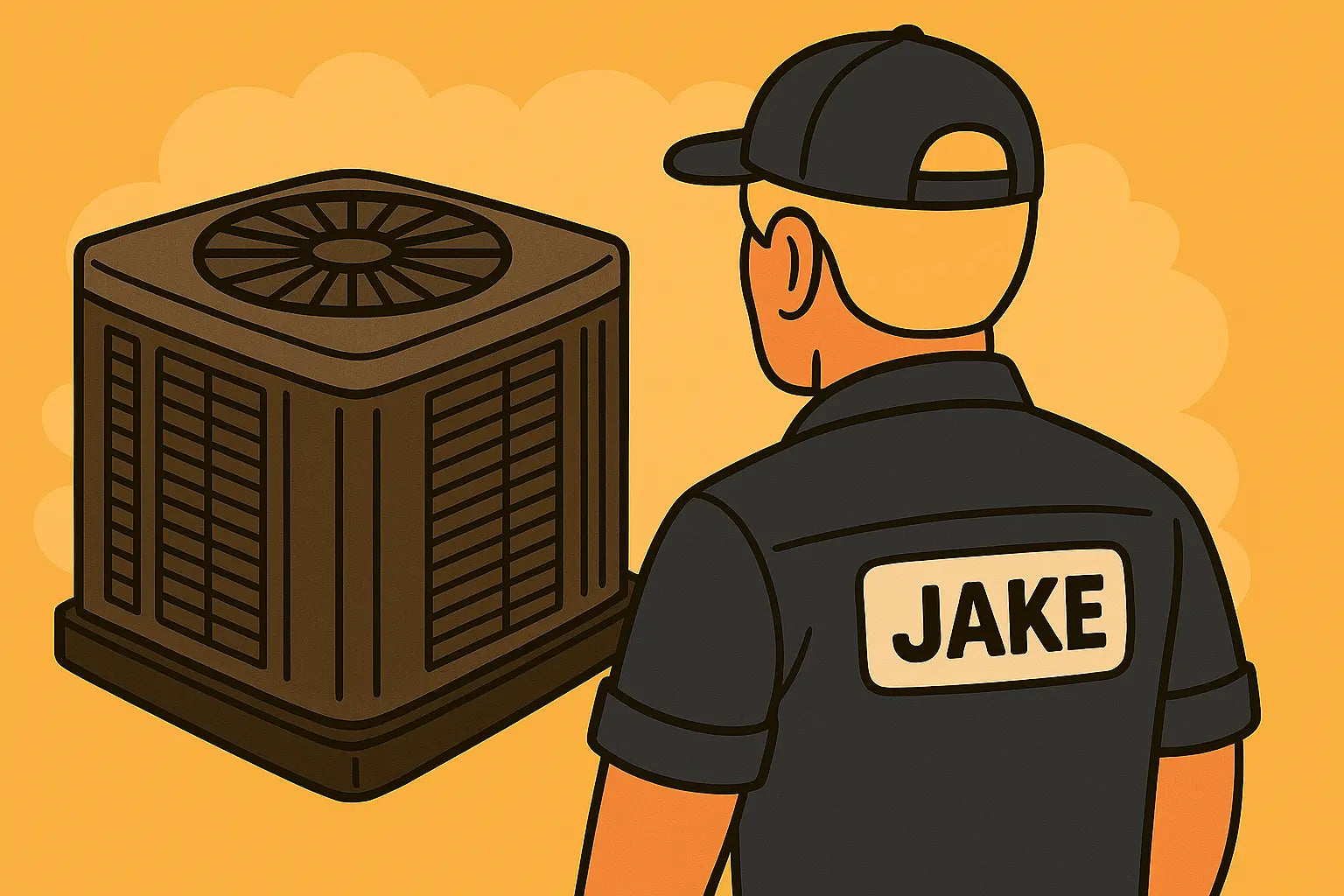Yo, it’s Jake 👋
Look—I know what it’s like when your AC goes dark during the hottest week of the year. You’re sweaty, you’re cranky, and your pets are eyeing you like you’re a walking ice cube. But before you start kicking vents or Googling "AC repair near me," I’ve got you.
This post is a no-nonsense, step-by-step walkthrough of exactly how to troubleshoot your central air system without panic—or a plumber’s paycheck.
Let’s crack this thing open 🔧
Step 1: Start at the Thermostat (Yeah, Really)
So many "broken AC" calls end with the tech flipping one switch on the thermostat. Save yourself the shame and check these first:
-
Is it set to cool?
-
Is the temperature set below the current room temp?
-
Are the batteries dead?
Give it a reset too—shut it down, wait 30 seconds, and power it back up. It’s like a mini AC exorcism 🧯
Need help learning how these smart things tick? CNET breaks it down in this
thermostat troubleshooting guide.
Step 2: Check the Breaker Panel
Before you yank panels off your unit or assume it’s a compressor issue, pop open the electrical panel. Look for:
-
Tripped AC breakers (usually marked).
-
Tripped fuses at the disconnect box near the outdoor condenser.
Reset carefully, and never keep flipping breakers if they keep tripping. That’s your system yelling, “Something’s wrong!”
Step 3: Investigate Airflow (Filter First!)
Poor airflow can fake a full system failure. Make sure your filters:
-
Aren’t clogged with dust, fur, and regret.
-
Have been changed in the last 30–60 days.
If your filter looks like a dryer lint trap from 1998, swap it out. Also check that:
-
Vents are open and unblocked.
-
Duct dampers (if installed) are positioned correctly.
Energy.gov has a good walkthrough on airflow and general AC maintenance that’s beginner-friendly.
Step 4: Peek at the Condenser Unit
Head outside and give that condenser a once-over:
-
Is the fan spinning?
-
Do you hear buzzing but no spinning? Could be a failed capacitor.
-
Is it covered in leaves, gunk, or grass clippings?
Shut off the power and clean the coil fins with a hose (gentle stream) or a fin comb. A dirty condenser can cause major cooling issues.
Want to go deeper? This Family Handyman guide to cleaning your AC unit is top notch.
Step 5: Ice Ice Baby ❄️
If your evaporator coil is frozen:
-
Shut off the system.
-
Turn the fan ON (not cool mode) to help thaw.
-
Check the filter (again) and refrigerant lines for blockages or leaks.
Pro tip: Never run your system with a frozen coil. You’ll end up with water damage or a fried compressor, and that’s not a fix Jake can walk you through over the internet.
Step 6: Condensate Drain Drama
If your AC isn’t running but the thermostat looks fine, check the condensate drain line. Many systems have a float switch that shuts everything off when it detects a clog. Signs:
-
Water near the furnace or air handler.
-
Gurgling sounds.
-
Visible slime or algae in the drain pipe.
Clean it out with vinegar, or if you're feeling aggressive, a shop vac. This HVAC School guide to clearing drain lines is short and sweet.
Step 7: Hear Weird Sounds? Decode 'Em 🔊
Strange noises? Here’s Jake’s noise translator:
-
Buzzing = electrical or capacitor issues.
-
Hissing = possible refrigerant leak (don’t DIY this).
-
Clanking = loose fan or compressor parts.
-
Clicking but no startup = failed contactor.
Don’t ignore sounds—your system talks, even if it sounds like R2-D2 with asthma.
Bonus: Jake’s Fast AC Troubleshooting Flowchart 💡
| Symptom | Likely Cause | DIY Fix? |
|---|---|---|
| No power | Thermostat, breaker, float switch | ✅ |
| Poor airflow | Dirty filter, blocked ducts | ✅ |
| No cold air, fan runs | Low refrigerant, dirty coils | ⚠️ (clean yes, refrigerant no) |
| Frozen coil | Clogged filter, airflow issues | ✅ |
| AC cycles on/off frequently | Thermostat location, dirty coils | ✅ |
| Buzzing, no fan | Capacitor or contactor failure | ⚠️ (call if unsure) |
When to Call In the Pros 📞
Look, Jake’s all about DIY—but here’s where you stop and call a licensed tech:
-
Suspected refrigerant leaks or low charge.
-
System still tripping breakers after resets.
-
No power at the contactor or control board.
-
Compressor isn't starting or sounds like it’s struggling.
Remember: messing with high voltage and pressurized refrigerants is how DIY turns into ICU.
Tools You’ll Be Glad You Have 🧰
-
Screwdriver set
-
Multimeter
-
Fin comb or soft brush
-
Shop vac (for condensate line)
-
Flashlight/headlamp
-
Extra filters
-
Gloves and eye protection
Got these? You’re halfway to pro status already.
Final Word from Jake 🧊
Troubleshooting your central AC doesn’t mean busting out the HVAC textbook—it just means following the signs and knowing your limits.
This playbook’s here to guide you through it, step-by-step, no guesswork or gimmicks. And if you're starting to feel like your unit’s a lost cause? Might be time to upgrade.
Swing by The Furnace Outlet’s full central AC systems collection and check out setups made for DIYers and seasoned techs alike. Pre-matched, no confusing part numbers, and real humans who’ll help you if you get stuck. That’s how I like it. 😎
Curious about refrigerant in this system? Visit my guide: Refrigerants and Your Central AC.
Now get out there and show your AC who’s boss.
Catch ya in the next guide.
—Jake, your comfort loving tech!







